Disclosure: This article contains affiliate links. We may earn a commission from purchases at no extra cost to you, which helps our travel content.
There's something deeply nostalgic about Lancaster County that resonates with me as both a chef and cultural explorer. This pocket of Pennsylvania, with its patchwork quilt of farmlands and horse-drawn buggies clip-clopping down country roads, offers a visual feast that's as nourishing to the soul as their farm-to-table cuisine is to the body. As someone who's spent decades exploring the connections between food, culture, and history, I've found that photographing Amish Country requires not just technical skill, but also a profound respect for the people who call this timeless landscape home.
Understanding Amish Photography Etiquette
Before we delve into camera settings and composition tips, let's address the elephant in the room: photographing Amish people requires cultural sensitivity that goes beyond typical travel photography etiquette. The Amish believe that photographs violate the biblical commandment against making graven images and can promote individualism and pride.
During my visits to Lancaster County, I've learned to respect these beliefs by focusing my lens on landscapes, architecture, and scenes that don't prominently feature recognizable Amish individuals. This doesn't mean you can't capture the essence of Amish life – just do so from a respectful distance, perhaps photographing buggies from behind or farmers working in distant fields.
When visiting markets or shops, I always ask permission before taking photos of crafts or food displays. Most non-Amish shopkeepers are accommodating, but always honor any refusals graciously. Respeto – respect – is the foundation of meaningful cultural exchange, whether through food or photography.

💡 Pro Tips
- Never photograph Amish people's faces
- Focus on landscapes, architecture, and buggy silhouettes instead
- Always ask permission before photographing in Amish-owned businesses
Best Locations for Landscape Photography
Lancaster County unfolds like a hand-painted canvas, especially in the golden hours of early morning and late afternoon. I've found that the rolling farmlands between the towns of Bird-in-Hand and Intercourse offer some of the most picturesque vistas. The patchwork of differently cultivated fields creates natural leading lines and patterns that photography instructors dream about.
For the best elevated views, I recommend driving the back roads around Ephrata and climbing the modest hills near Neffsville. From these vantage points, you can capture sweeping landscapes dotted with traditional bank barns and farmhouses without intruding on anyone's privacy.
When photographing these pastoral scenes, I rely on my polarizing filter to manage reflections and enhance the deep blues of the sky against the verdant fields. The filter brings out those dramatic clouds that often build up over the Pennsylvania countryside in summer afternoons.
Don't overlook the covered bridges that punctuate the landscape. My favorite is the Hunsecker Mill Bridge spanning the Conestoga River – arrive just after sunrise with a remote shutter release to capture the bridge in perfect morning light without camera shake.
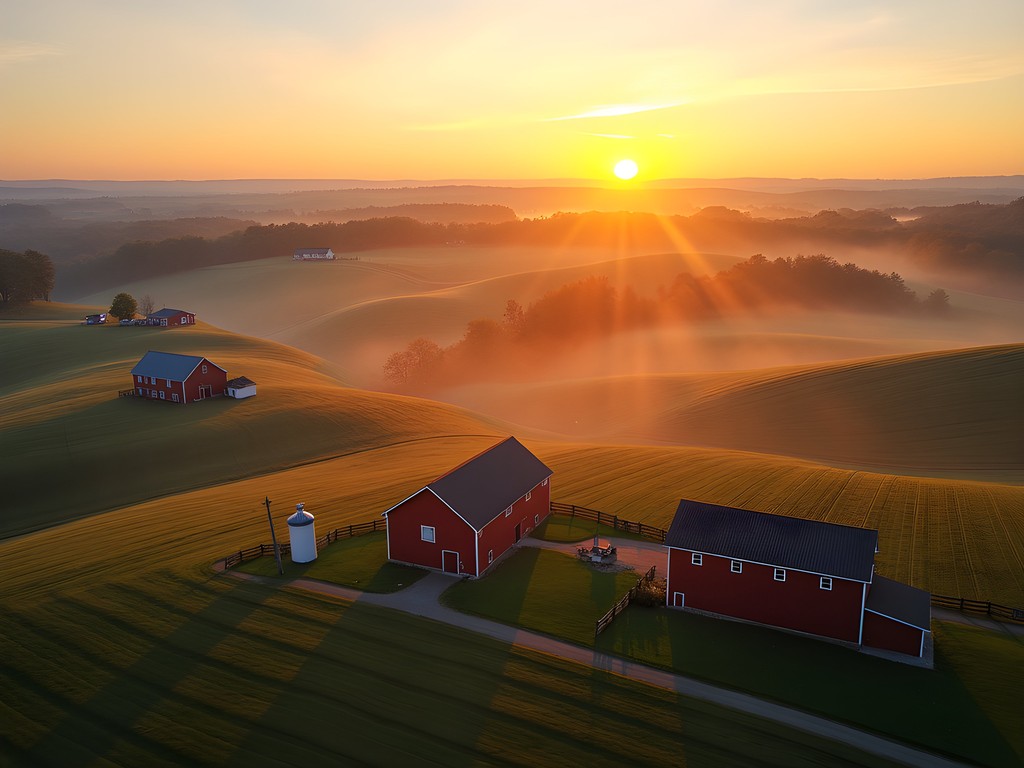
💡 Pro Tips
- Visit the viewing areas near Intercourse for elevated panoramas
- Photograph covered bridges during early morning hours for best light
- Use back roads between towns to find uncomposed, authentic scenes
Capturing Rural Life and Agriculture
The rhythms of agricultural life in Lancaster County offer photographers an authentic glimpse into traditions that have remained largely unchanged for generations. During my summer visits, I've found that early mornings (between 5:30-7:00 AM) provide opportunities to photograph farm activities from public roads without intrusion.
The harvest scenes in particular remind me of my culinary background – seeing the direct connection between field and table is something that resonates deeply with my philosophy about food. Watch for farmers working their fields with horse-drawn equipment – these scenes create powerful juxtapositions of traditional methods in modern times.
For these agricultural scenes, I often use my telephoto lens which allows me to capture distant farm activities respectfully. The compression effect of a telephoto lens also beautifully stacks the rolling hills in your composition.
Farmers' markets provide another wonderful photography opportunity. The Bird-in-Hand Farmers Market and Central Market in downtown Lancaster showcase the bounty of local produce. As a chef, I find these displays of heirloom vegetables and handcrafted foods irresistible subjects. The vibrant colors of fresh produce pop when using a light diffuser to soften harsh midday shadows.
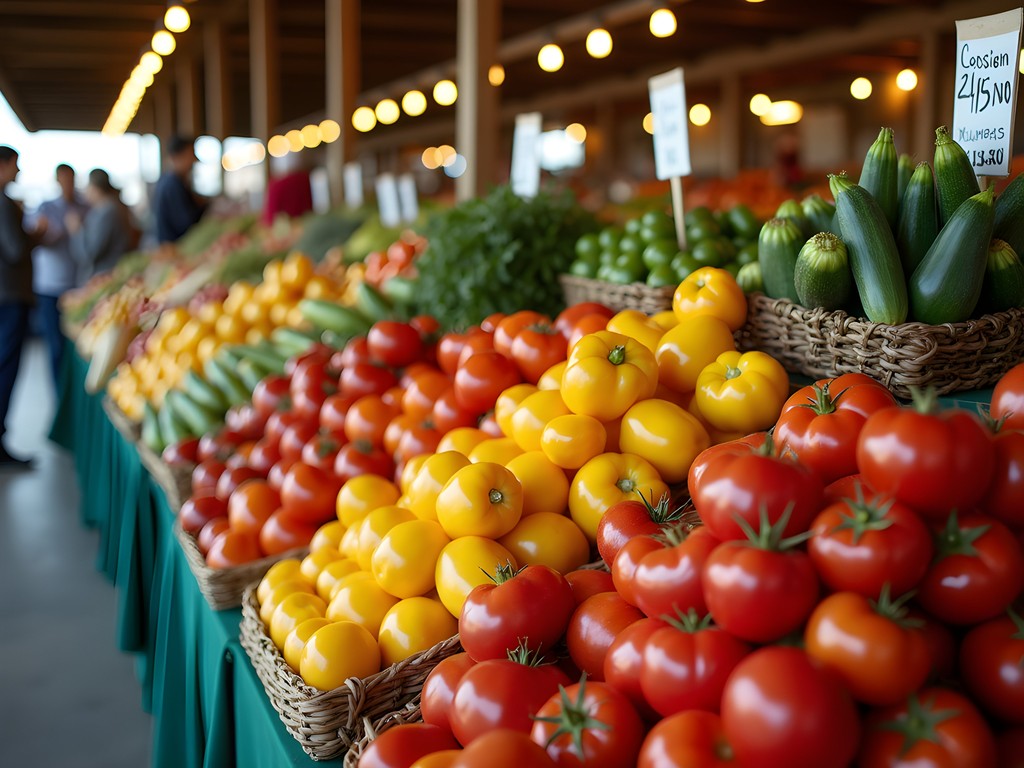
💡 Pro Tips
- Arrive early (5:30-7:00 AM) to capture authentic farm activities
- Use telephoto lenses for respectful distance when photographing agricultural scenes
- Visit farmers' markets for vibrant food photography opportunities
Documenting Traditional Crafts and Culinary Heritage
As someone who's spent a lifetime exploring the connections between food, culture, and history, I find Lancaster County's traditional crafts and culinary heritage particularly fascinating to document. The region's quilting traditions, woodworking, and food preparation methods tell stories that span generations.
Many Amish craft shops and non-Amish owned museums welcome photography (though always ask first). The Landis Valley Museum and The Amish Farm and House provide photographer-friendly environments where you can capture traditional crafts and cooking demonstrations.
When photographing indoor spaces with varying light conditions, I've found my light meter invaluable for getting accurate exposures of dimly lit workshops and kitchens. The traditional methods of food preservation – from apple butter making to canning – create visually rich scenes that connect directly to my interests in culinary history.
For capturing the intricate details of quilts and handcrafted items, consider using a macro extension tube set which transforms standard lenses into macro lenses without the expense of dedicated macro glass. These affordable adapters let you get close-up shots of the stunning handwork that defines Amish craftsmanship.
During my last visit, I spent an afternoon photographing the process of pretzel-making at one of the local pretzel factories – the twisting of dough by hand is a dance of muscle memory and tradition that tells the story of Pennsylvania Dutch culinary heritage better than words ever could.
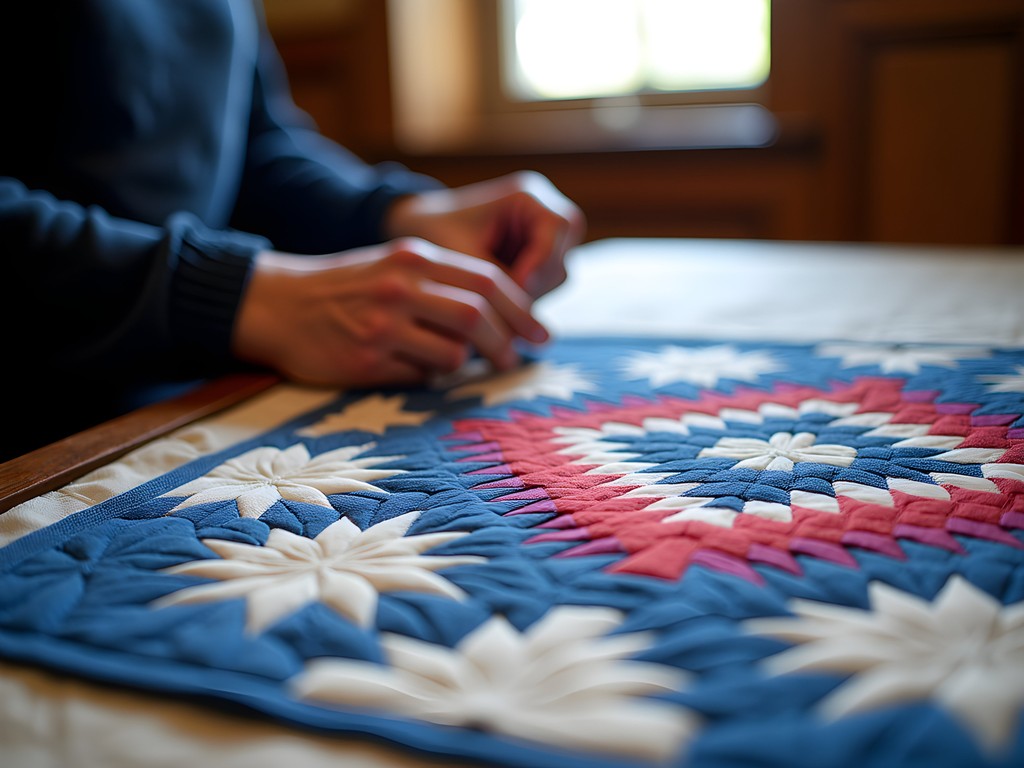
💡 Pro Tips
- Visit the Landis Valley Museum for photography-friendly craft demonstrations
- Use macro photography to capture intricate quilt patterns and handcrafted details
- Document food preparation techniques as a way to tell cultural stories
Seasonal Photographic Opportunities
Summer in Lancaster County offers distinct photographic opportunities that change with the agricultural calendar. Early summer (June) brings lush green fields and the first harvests, while late summer (August) features golden wheat and corn reaching impressive heights.
One of my favorite summer photography experiences is capturing the haymaking process – watching teams of horses pull harvesting equipment through fields as families work together creates images that feel timeless. The contrast between deep blue summer skies and golden hay bales is particularly striking.
During my visits, I've learned to keep a weather-sealed camera bag ready at all times. Summer afternoons often bring dramatic thunderstorms that roll across the landscape, creating spectacular lighting conditions just before and after the rain. These brief moments offer dramatic skies that transform ordinary farm scenes into extraordinary photographs.
The summer heat can be challenging for both photographers and equipment. I always carry a cooling towel that provides hours of relief when soaked in cold water. This simple item has saved many photography sessions when temperatures climb into the 90s.
Qué calor! The humidity can be intense, but the resulting morning mist creates atmospheric conditions that photographers dream about. Rise before dawn, find a high vantage point overlooking a valley, and watch as the first light reveals farms emerging from the mist like islands in a white sea.
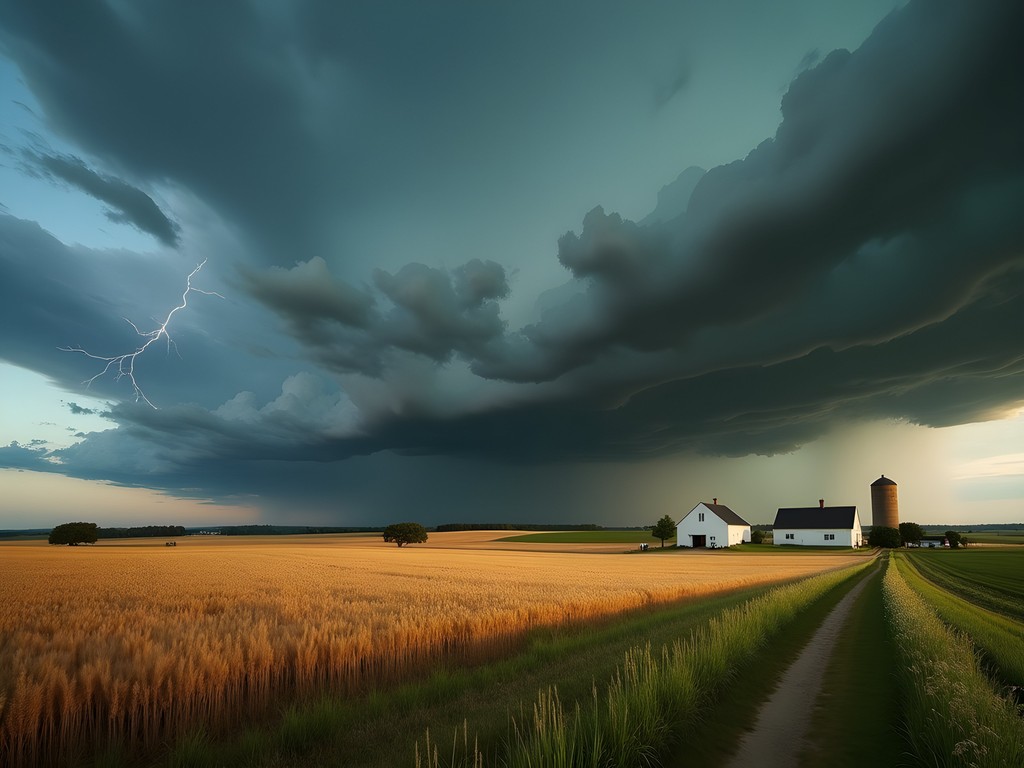
💡 Pro Tips
- Photograph haymaking activities in early summer for classic rural scenes
- Be ready for dramatic skies before and after summer thunderstorms
- Capture morning mist over valleys by arriving before sunrise
Final Thoughts
Photographing Lancaster County has taught me as much about cultural respect as it has about composition and light. In many ways, this approach mirrors my philosophy about food – the most meaningful experiences come when we approach different cultures with genuine curiosity and deep respect. The images you'll create here go beyond pretty pictures; they document a way of life that has maintained its core values despite the pressures of modernization.
As you pack your gear and prepare to explore these rolling hills, remember that the most compelling photographs will come from patience and observation. Take time to understand the rhythms of rural life before pressing the shutter. Sit at a local restaurant, taste the farm-fresh cooking, and listen to the stories that season the experience like the perfect spice.
I hope this guide helps you capture not just the visual beauty of Lancaster County but also its spirit – a spirit that reminds us all that there are still places where tradition, community, and connection to the land remain the true measure of a rich life. ¡Buen viaje y buenas fotos, amigos!
✨ Key Takeaways
- Respect Amish beliefs by avoiding photographs of faces and asking permission when appropriate
- Early morning and evening golden hours provide the best light for capturing Lancaster County's rural landscapes
- Focus on agricultural activities, traditional crafts, and culinary traditions to tell the deeper cultural story
- Weather conditions like morning mist and summer storms create dramatic photographic opportunities
- The most compelling images come from taking time to understand and respect the culture you're photographing
📋 Practical Information
Best Time to Visit
Summer (June-August)
Budget Estimate
$150-250 per day including accommodations, meals, and transportation
Recommended Duration
2-3 days
Difficulty Level
Beginner

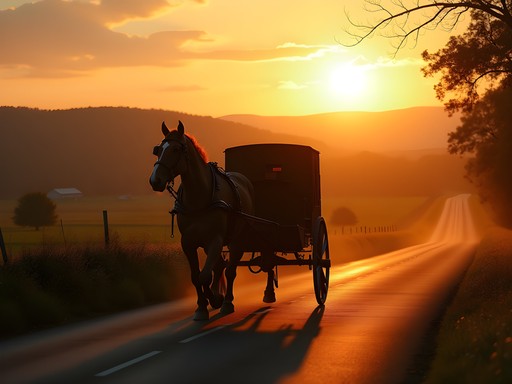



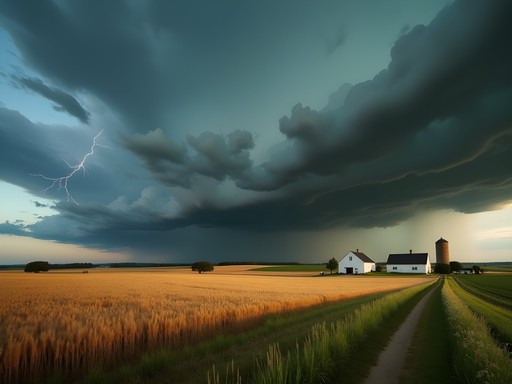


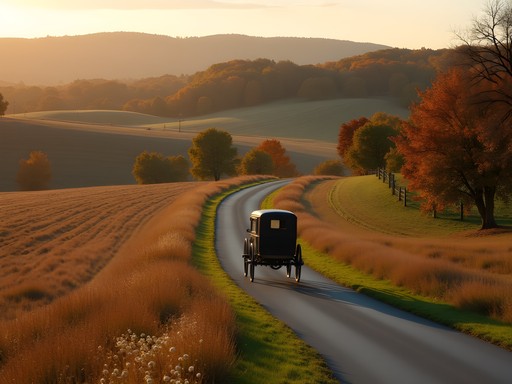
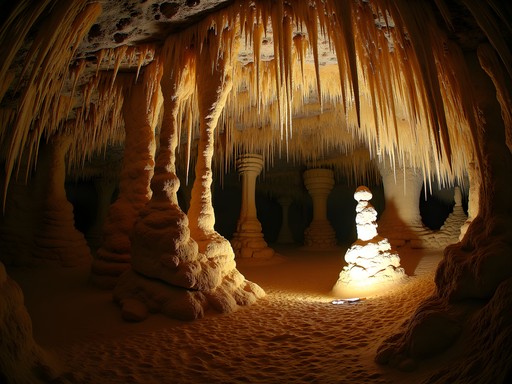






Comments
beachlegend
Just got back from Lancaster and your guide was spot on! Those roadside produce stands made for amazing photos. We stayed at a B&B near Bird-in-Hand and the hosts were super helpful about where we could respectfully take pictures. That sunrise over the farmland was worth the 5am wake-up call!
starlegend
Which B&B did you stay at? Planning a trip there this fall.
beachlegend
We stayed at the Amish Country Homestead. Great place, super friendly owners who know the area really well!
starlegend
Love these photos! The countryside looks so peaceful.
Douglas Bradley
Donald, I really appreciate how you've emphasized respecting Amish customs in your guide. I visited Lancaster last spring and found the early morning light absolutely magical over those rolling farmlands. The section about documenting traditional crafts was particularly helpful - I spent a day at the craft markets and came away with some stunning detail shots of quilting and woodworking. One tip for others: I found that a telephoto lens was incredibly useful for capturing distant farm scenes without being intrusive. My zoom lens was perfect for those pastoral landscapes while maintaining a respectful distance.
starlegend
Those morning shots are always worth getting up early for!
beachlegend
Great post! I'm heading to Lancaster next month. Did you have any issues with people not wanting their photos taken? Not sure about the etiquette there.
Douglas Bradley
Not the author, but I've photographed in Amish country several times. Most Amish people prefer not to be photographed directly - it's considered against their beliefs. Focus on landscapes, buildings, and general scenes instead. Always ask permission if you're unsure.
beachlegend
Thanks for the tip! Will definitely be respectful and stick to landscapes.
backpackmaster
Heading to Lancaster next month with my camera. Any specific roads or farms that are particularly welcoming to photographers? Don't want to be disrespectful but really want to capture some authentic scenes.
springseeker
Not the author, but when I went, the back roads between Intercourse and Bird-in-Hand were gorgeous and less touristy. Just remember to pull completely off the road when stopping for photos!
Donald Sanchez
Great advice from springseeker! I'd add that the public markets are good places to start - the New Holland Farmers Market on Wednesdays lets you interact respectfully with vendors. For landscapes, try Route 772 early morning when farm work is beginning. And always ask before photographing anyone up close.
backpackmaster
Thanks both! Really appreciate the specific locations. Will definitely check out Route 772 and the farmers market.
Casey Andersson
Donald, your approach to photographing Lancaster County resonates deeply with me. Last year, I stayed at a charming B&B near Bird-in-Hand and spent mornings capturing the mist rising over the fields. The juxtaposition of simplicity and complexity in Amish craftsmanship provides such rich visual storytelling opportunities. I particularly appreciated your section on documenting culinary heritage - those close-ups of the traditional baking methods were masterful. I found using my telephoto lens gave me the distance needed to respectfully capture daily life without being intrusive. Would love to hear more about how you approached the indoor craft workshops - the lighting looks so natural!
Donald Sanchez
Thank you, Casey! For the indoor workshops, I actually used only available window light and a reflector. Most craftspeople were very accommodating once I explained my interest in preserving traditional methods. The key was spending time building rapport before bringing out the camera.
springseeker
Thanks for addressing the photography etiquette so clearly, Donald! I visited Lancaster last summer and was so confused about what was appropriate. Wish I'd had this guide then! The respect you show for the Amish community while still capturing the beauty of their surroundings is really admirable. Those sunset shots over the farmland are absolutely stunning - what time of year were those taken?
Donald Sanchez
Thanks for the kind words! Those sunset shots were taken in early June, right after a light rain. The light that time of year is magical around 7:30-8:30pm.
springseeker
Perfect timing then! I'll have to plan my next trip around early summer. The contrast between the dark clouds and golden light is incredible.
John Hart
Donald, your approach reminds me of my work documenting traditional communities in rural Japan. The parallels between photographing Amish communities and traditional Japanese villages are striking - both require patience, respect, and an emphasis on environmental context rather than portraits. I found the craft sections particularly compelling. The woodworking shops, when you can find ones that allow photography, offer fascinating studies in light and shadow. Did you find any particular time of year best for capturing the agricultural cycles? I visited in early autumn and the harvest activities provided wonderful documentary opportunities.
Donald Sanchez
John, that's a fascinating parallel with Japanese villages! I found late spring (May) and harvest season (September-October) to be the most photogenic. The spring planting with horse-drawn plows creates those beautiful linear patterns in fields, while autumn brings incredible color to both the landscape and produce at markets.
triprider
Did you have any issues with getting permission for the craft photos? I'm specifically interested in quilting and woodworking shots.
wildlife
I found that most craft shops in the touristy areas are totally fine with photos of the items (not people). Just always ask first!
bluehero
Are there any organized photo tours in the area that respect Amish culture?
John Hart
Not @Donald, but I took a small group tour with Lancaster Farmland Trust last year. They focus on landscape photography and agricultural heritage rather than photographing people. The guide was extremely knowledgeable about both photography and Amish culture. Highly recommended!
bluehero
That sounds perfect, thanks John! Will look them up.
Venture X
Premium card with 2X miles, $300 travel credit, Priority Pass